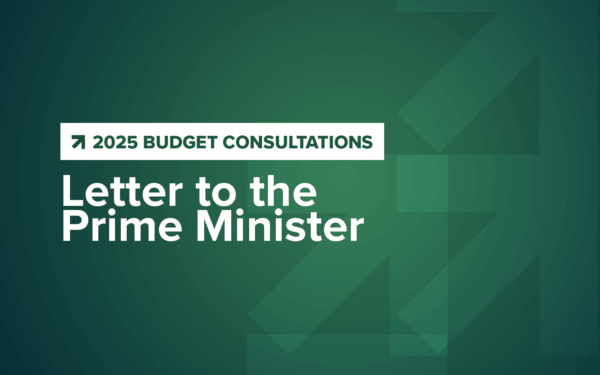It’s okay for Ottawa to keep borrowing. But let’s not go overboard
As published in The Globe and Mail
As we await Prime Minister Mark Carney’s first budget next month, all indications point to a meaningful escalation of borrowing that will spark a national conversation about the role of the state in the economy and the long-term sustainability of Canada’s finances.
Estimates vary, but it’s clear we’ll be seeing a much higher deficit profile. National Bank of Canada projects about $100-billion this year alone, or 3 per cent of gross domestic product. In addition, over the longer term, Mr. Carney appears intent on maintaining deficits well above 1 per cent of GDP to sustain a more rapid pace of investment.
This marks a normalization of structural deficit financing that is a clear break from how fiscal policy has been thought about in recent decades. And it sets the stage for a consequential debate that will range from the ideological to the technical.
We won’t get into ideological debates here. Suffice to say that not everyone accepts that the state needs to intervene so decisively. While everyone recognizes that Canada faces formidable economic challenges in an unstable world, many people will argue that the answer is not more state action, but less.
At the same time, it’s worth pointing out that there appears to be some stakeholder tolerance for deficit financing of investment. In a recent Business Council of Canada consultation with business leaders, economists and former officials, many supported targeted, upfront investments and efforts to de-risk major projects that generate long-term economic returns.
The next question is whether Canada can afford more debt, even if deficit financing makes sense in principle. Do we have the fiscal capacity? Are we exposing ourselves to unacceptable risks down the line? Recent comments from the Parliamentary Budget Officer warning that we’re “on the precipice” have triggered a wide range of reactions.
In our view, Canada still enjoys the trust of markets and retains fiscal capacity, even if credibility has eroded in recent years. The fiscal trends are worrisome, and corrective action is needed. But there remains some scope to finance an investment agenda, should the government choose to do so smartly.
One area where there is little debate is the need for fiscal guardrails. In fact, there is near unanimity on this issue: Anchors are seen as essential. They signal discipline, structure trade-offs within government, and communicate direction to markets and the public. Even people open to deficit financing for investment believe the government needs a credible medium-term consolidation plan that stabilizes debt and interest payment burdens.
What should those anchors look like?
Our preference would be a dashboard framework that includes at least three components. One, a long-term sustainability anchor such as a declining gross-debt-to-GDP ratio. Two, an early-warning indicator such as interest-to-revenue or interest-to-GDP ratios. And critically, three, it should include operational rules such as a deficit reduction target or spending cap that are easily understood and put into practice by ministers and the public service.
One recurring theme in our conversations with stakeholders, particularly among those with government experience, was how to introduce guardrails that are practical and binding. Economists tend to prefer technical rules over an economic cycle because they fit economic theory. But history shows that in the real world, simple, blunt targets with clear accountability over short time horizons work best.
Measures such as debt-to-GDP are key gauges of medium-term sustainability but are less useful as day-to-day constraints. That is why simple rules such as moving toward balanced budgets proved effective in the past.
We are not recommending a balanced-budget rule today. But operationally simple rules, such as halving the deficit within three years, can serve the same function. It’s simple and clear, and it provides an operational frame through which trade-offs can be assessed and decisions made.
Here’s an example. If the deficit is $100-billion this year, halving it in three years would imply a $50-billion deficit by 2028. Hardly austerity. And in three years, policy makers can assess whether that level is sustainable or not – informed by the other metrics.
Ultimately, what matters is whether Canada has a fiscal framework that combines Mr. Carney’s ambition with accountability and constraints to force choices.
Latest Opinion
The missing piece in Canada’s defence industrial strategy
October 6, 2025










